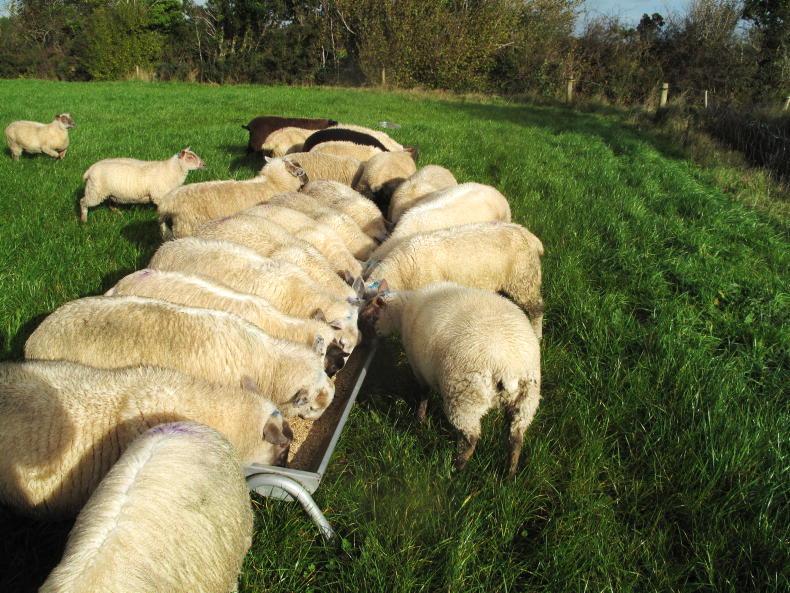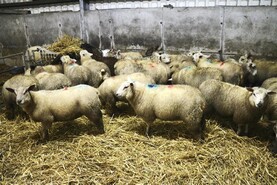The 2021 grass growth season has been hugely variable for many farmers.
There have been periods of lower than normal grass growth, followed by short bursts in growth and drought-like conditions for some to add in to the mix.
Current grass growth supplies continue to vary across farms depending on location, stocking rate and the potential growth response in swards.
Drafting variability
There is also variability at farm level in drafting progress. Some farmers who took advantage of the higher prices and kept lambs moving at lighter weights or supplemented lambs targeting getting a higher percentage away at higher prices are typically on track or ahead on drafting progress.
Others limited by poor grass growth rates are running behind.
Attention in early- and mid-season lambing flocks should be now turning to ensuring there is a sufficient supply of grass to prepare ewes for breeding and meet the nutritional requirements pre- and post-breeding.
Teagasc targets
Teagasc targets for a mid-season flock lambing from the start to mid-March are to have at least 45% of lambs drafted for sale by mid-August, rising to 70% by mid-September.
Ewe lambs selected for retaining for breeding should be included in these figures.
It is also worthwhile assessing lambs remaining on farm to explore your options.
Where lambs are on target and performing satisfactorily on a high-quality grass diet, then there may not need to be any changes made.
If lambs are falling well behind target and it is likely to result in lambs competing with ewes for grass supplies at mating, then action needs to be taken.

Where lambs are being supplemented, the best response is from short-term feeding of heavier lambs.
If grass supplies are positive and you are starting to supplement to underpin performance in the weeks ahead, then feeding 0.3kg to 0.5kg, with access to good-quality grass, will generally more than suffice.
However, this depends on grass quality and the type of lambs being fed. For example, it may be beneficial to offer higher supplementation to ram lambs with a good frame that are short on flesh for faster finishing.
Group similar lots
It is advisable to go through lambs and group into similar lots, with a better response to be gained from supplementing lambs that are closer to finishing.
Where grass supplies are tight, then do the sums and decide if supplementing or selling into a lively store lamb market is the best option.
Reports continue of lambs being killed underweight and underfleshed.
There is little point in slaughtering light, poorly-finished lambs with kill-out, carcase grade and price all taking a major hit.
This is the case in a normal year and should gain even more credence in 2021 with the strength of the store lamb market and prices on offer.
The 2021 grass growth season has been hugely variable for many farmers.
There have been periods of lower than normal grass growth, followed by short bursts in growth and drought-like conditions for some to add in to the mix.
Current grass growth supplies continue to vary across farms depending on location, stocking rate and the potential growth response in swards.
Drafting variability
There is also variability at farm level in drafting progress. Some farmers who took advantage of the higher prices and kept lambs moving at lighter weights or supplemented lambs targeting getting a higher percentage away at higher prices are typically on track or ahead on drafting progress.
Others limited by poor grass growth rates are running behind.
Attention in early- and mid-season lambing flocks should be now turning to ensuring there is a sufficient supply of grass to prepare ewes for breeding and meet the nutritional requirements pre- and post-breeding.
Teagasc targets
Teagasc targets for a mid-season flock lambing from the start to mid-March are to have at least 45% of lambs drafted for sale by mid-August, rising to 70% by mid-September.
Ewe lambs selected for retaining for breeding should be included in these figures.
It is also worthwhile assessing lambs remaining on farm to explore your options.
Where lambs are on target and performing satisfactorily on a high-quality grass diet, then there may not need to be any changes made.
If lambs are falling well behind target and it is likely to result in lambs competing with ewes for grass supplies at mating, then action needs to be taken.

Where lambs are being supplemented, the best response is from short-term feeding of heavier lambs.
If grass supplies are positive and you are starting to supplement to underpin performance in the weeks ahead, then feeding 0.3kg to 0.5kg, with access to good-quality grass, will generally more than suffice.
However, this depends on grass quality and the type of lambs being fed. For example, it may be beneficial to offer higher supplementation to ram lambs with a good frame that are short on flesh for faster finishing.
Group similar lots
It is advisable to go through lambs and group into similar lots, with a better response to be gained from supplementing lambs that are closer to finishing.
Where grass supplies are tight, then do the sums and decide if supplementing or selling into a lively store lamb market is the best option.
Reports continue of lambs being killed underweight and underfleshed.
There is little point in slaughtering light, poorly-finished lambs with kill-out, carcase grade and price all taking a major hit.
This is the case in a normal year and should gain even more credence in 2021 with the strength of the store lamb market and prices on offer.







 This is a subscriber-only article
This is a subscriber-only article










SHARING OPTIONS: